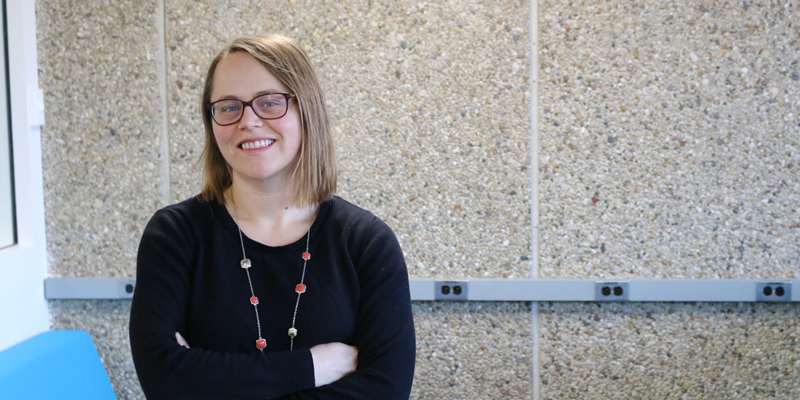Sarah Malmquist returns to her College of Biological Sciences roots, this time as a faculty member.

Sarah Malmquist’s adventures in higher education have taken her from foggy mornings of Seattle to busy evenings on Long Island. But last semester, the often seemingly endless winters of Minnesota called her back.
Malmquist joined the CBS faculty last fall as a teaching assistant professor with the Department of Biology Teaching and Learning (BTL). The move to BTL brings her back to the college where she earned her undergraduate degree in 2004, double majoring in biochemistry and genetics, cell biology and development. She later completed her doctorate at the University of Washington and then made her way east, teaching physiology at SUNY - Stony Brook in New York until last year.
“As an undergrad, I did research in a lab that is just a building over and after graduating, I was a technician in a lab in another building nearby,” she says from her office in Moos Tower. “It kind of feels like coming home.”
After researching the development of neurons of zebrafish for her Ph.D., she moved into the field of physiology education at Stony Brook, an area that particularly piques her interest. Now, her teaching focus is on physiology.
“Physiology is applicable to everyone’s lives and it’s important for so many people to know,” she says. “In particular, when making choices about healthcare, understanding how your own body works and how different types of medical research impact you is important. The connection to the world and the real choices that you have to make is interesting.”
While at Stony Brook, part of her role included moving physiology courses away from the traditional lecture style to include active learning. Since joining BTL, she transitioned a comparative physiology course away from learning particular systems to understanding broader physiological concepts.
“We organized our course around big ideas with an emphasis on the most important concepts that the people who work in physiology education feel that all students need to know to be successful physiologists,” she says. “Having it more focused on not just memorizing different steps, but recognizing commonalities between these different processes and learning it in an active way is what we were focusing on and we’re collecting some data on the success of that.”
Noting the benefit that active learning has in decreasing achievement gaps in science classrooms, Malmquist sees the impact her teaching has beyond just the classroom.
“Our healthcare workforce needs to be more diverse to meet the needs of the people using the system in the United States, including physical therapists and nurses,” she says. “Improving the way that we teach physiology will increase the diversity in the workplace, I think, and the healthcare climate in the country.” -Lance Janssen